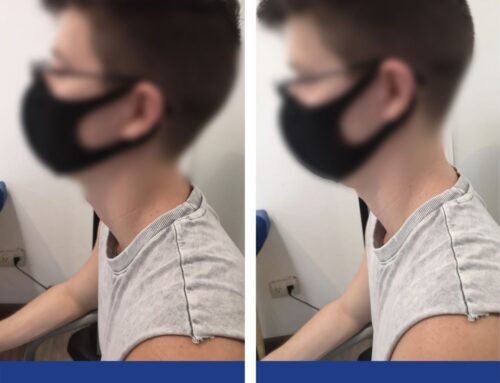Do you feel pain in the lateral region of your leg? It may be fascia lata tendinitis
You may feel pain in the lateral region of the leg and not know what the reason is. In multiple occasions this pain can be caused by an inflammation in the tensor of the fascia lata. This is caused by friction of the iliotibial band rubbing on the external condyle of the knee during flexion and extension movements causing fascia lata tendinitis.
The iliotibial band is a thick band of fibrous tissue that extends from the pelvis, covering the hip joint on the outside of the leg, to insert into the tibia.
The inflammation of the fascia lata is found in the weakness or shortening of the muscles of the hip, since this would imply a greater tension on the external region of the knee and therefore on the fascia lata.
Symptoms
The most prominent symptom of fascia lata tendinitis is shooting pain on the outside of the knee. This knee pain in some cases can be so severe that the person suffering from this injury can no longer walk properly. Other symptoms that may include:
- Inflammation and swelling of the joint.
- Overheating in the joint.
- Burning sensation on the outside of the knee.
Causes of fascia lata tendinitis
How to diagnose it?
The physical examination can provide important information, which will not only help to establish the diagnosis, but also to design an appropriate therapeutic plan. During the physical examination, the doctor or physical therapist will passively move the leg while the patient is lying down and wait to see which movements the patient indicates pain. In order to differentiate the origin of the pain from other related pathologies, a variety of diagnostic tests are performed.
Renne's test: It consists of unloading weight on the leg in flexion (60°-90°), while the evaluator presses the lateral femoral epicondyle. If before this gesture, the patient reports pain and the examiner perceives a snapping or crackling in the palpated area, it is a positive sign of this condition.
Noble's test: in this test the patient is evaluated in a supine position (lying down) and with a leg flexion of 90° (a goniometer is used to ensure the correct angle of the joint). While the patient extends the leg, the evaluator applies pressure to the lateral femoral epicondyle, if this triggers pain near 30-40° of flexion, the disease is considered to be present.
Ober test: performed with the patient lying on the side with the symptomatic limb facing up. Its leg is flexed to 90° and the hip in abduction and extension, the thigh is kept in line with the trunk. The patient is instructed to adduct (spread) the thigh as far as possible. The test is positive if the patient cannot adduct beyond the stretcher.
Physiotherapy turns out to be the most effective treatment, this is due to the fact that this injury is caused by an alteration in the movement: muscular and joint imbalances. For an ordinary person these alterations are not visible, however, for a physiotherapist they can be noticeable when inspecting with the naked eye the movement of the affected patient. Once the causal biomechanical factors have been clarified, a specific therapeutic training plan is designed, combined with the use of a variety of therapeutic techniques and tools that will vary in each case.
You may feel pain in the lateral region of the leg and not know what the reason is. In multiple occasions this pain can be caused by an inflammation in the tensor of the fascia lata. This is caused by friction of the iliotibial band rubbing on the external condyle of the knee during flexion and extension movements causing fascia lata tendinitis.
The iliotibial band is a thick band of fibrous tissue that extends from the pelvis, covering the hip joint on the outside of the leg, to insert into the tibia.
The inflammation of the fascia lata is found in the weakness or shortening of the muscles of the hip, since this would imply a greater tension on the external region of the knee and therefore on the fascia lata.
Symptoms
The most prominent symptom of fascia lata tendinitis is shooting pain on the outside of the knee. This knee pain in some cases can be so severe that the person suffering from this injury can no longer walk properly. Other symptoms that may include:
- Inflammation and swelling of the joint.
- Overheating in the joint.
- Burning sensation on the outside of the knee.
Causes of fascia lata tendinitis
How to diagnose it?
The physical examination can provide important information, which will not only help to establish the diagnosis, but also to design an appropriate therapeutic plan. During the physical examination, the doctor or physical therapist will passively move the leg while the patient is lying down and wait to see which movements the patient indicates pain. In order to differentiate the origin of the pain from other related pathologies, a variety of diagnostic tests are performed.
Renne's test: It consists of unloading weight on the leg in flexion (60°-90°), while the evaluator presses the lateral femoral epicondyle. If before this gesture, the patient reports pain and the examiner perceives a snapping or crackling in the palpated area, it is a positive sign of this condition.
Noble's test: in this test the patient is evaluated in a supine position (lying down) and with a leg flexion of 90° (a goniometer is used to ensure the correct angle of the joint). While the patient extends the leg, the evaluator applies pressure to the lateral femoral epicondyle, if this triggers pain near 30-40° of flexion, the disease is considered to be present.
Ober test: performed with the patient lying on the side with the symptomatic limb facing up. Its leg is flexed to 90° and the hip in abduction and extension, the thigh is kept in line with the trunk. The patient is instructed to adduct (spread) the thigh as far as possible. The test is positive if the patient cannot adduct beyond the stretcher.
Physiotherapy turns out to be the most effective treatment, this is due to the fact that this injury is caused by an alteration in the movement: muscular and joint imbalances. For an ordinary person these alterations are not visible, however, for a physiotherapist they can be noticeable when inspecting with the naked eye the movement of the affected patient. Once the causal biomechanical factors have been clarified, a specific therapeutic training plan is designed, combined with the use of a variety of therapeutic techniques and tools that will vary in each case.





